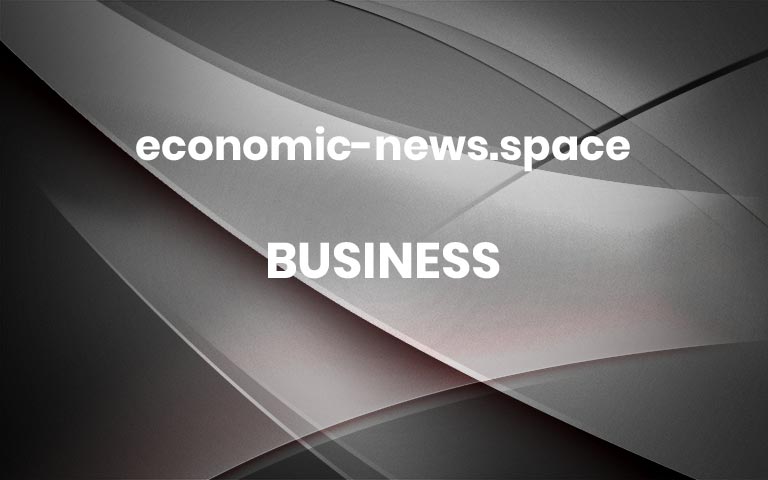It’s unclear if merger deregulation will jumpstart consolidation among larger media companies.
In the last five years, every large media merger has led to tens of billions in lost value for shareholders.
Even if big deals haven’t worked, it’s only fair to judge them against what would have happened had no consolidation occurred, according to Paul, Weiss global chair of M&A Rob Kindler.
David Zaslav at the Allen & Company Sun Valley Conference on July 9, 2024 in Sun Valley, Idaho.
David Grogan | CNBC
Comcast Chief Executive Officer Brian Roberts had a not-so-subtle message this week for Warner Bros. Discovery CEO David Zaslav: If you’re selling, I’m not buying.
“Instead of engaging in a process to buy content companies, we have focused primarily on organic opportunities like the NBA,” Roberts said Tuesday during Comcast’s second-quarter earnings conference call.
If you ask Zaslav, though, the reason Roberts and other potential buyers of media assets aren’t interested is because the government has scared them away.
Zaslav earlier this month publicly stated a theme that many legacy media executives have privately said for years: The current U.S. administration has stymied deal-making, and business leaders are desperate for the next U.S. president to usher in more mergers and acquisitions.
“We just need an opportunity for deregulation, so companies can consolidate and do what we need to be even better,” Zaslav told reporters at Allen & Co.’s annual Sun Valley conference.
Roberts’s disinterest and Zaslav’s lament shine a light on a fundamental question that may determine the future of the media and entertainment industry: Do the biggest media and technology companies want to buy smaller rivals for their content and can’t do so because of overly stringent regulations, or are they simply uninterested in the assets?
Exhibit A: During months of Paramount Global sale conversations, controlling shareholder Shari Redstone engaged with dozens of potential buyers before landing on a deal with Skydance Media, a relatively small studio that earlier this month agreed to buy a controlling stake in Paramount without acquiring the entire company.
Shari Redstone at the Allen & Company Sun Valley Conference on July 10, 2024 in Sun Valley, Idaho.
David Grogan | CNBC
Redstone received scant interest from big media and tech players who could have used her company’s movie and TV studio and library to bolster their own streaming services, according to people familiar with the matter. The sale process proved the largest media and technology didn’t want Paramount.
Other companies, such as Starz, AMC Networks and Vice Media, have also searched for deeper-pocketed buyers and come up empty.
There are two plausible explanations for why larger media and technology companies aren’t interested, said Rob Kindler, global chair of M&A at the law firm Paul, Weiss.
“Either they don’t want the assets, or they’ve decided the regulatory hurdles are too high,” Kindler said.
A push toward deregulation will give the media industry more clarity. It’s possible technology and the largest entertainment companies have sworn off significant media assets as acquisition targets given the governmental red tape around antitrust, national security and antiquated communications rules.
Or, perhaps, legacy media companies are simply undesirable assets to own.
Deal or no deal
Zaslav’s perspective stems from his own experience. He extended the life of his previous company, Discovery Communications — and probably his own tenure running a media company — by merging it with AT&T’s WarnerMedia in 2022. Without a deal, Discovery would have wallowed as a subscale content provider and owner of declining cable networks.
Now, Zaslav sees the same dynamic repeating with Warner Bros. Discovery, whose shares have fallen 36% in the past year as the company focuses on turning its flagship streaming service Max into a globally profitable business and grapples with the possibility of losing NBA media rights after nearly 40 years as a partner.
One way of doing that would be to find an acquirer with a trillion-dollar valuation to help pay for expensive content, such as Amazon, Apple or Google. Zaslav could also merge Warner Bros. Discovery with another legacy media company, such as Paramount Global, Fox or Disney, or NBCUniversal, if it were spun off from Comcast.
Zaslav’s perspective on deregulation in media — that a lighter touch would inherently mean more big-money deals — is tantamount to life or death for legacy media.
David Zaslav at the Allen & Company Sun Valley Conference on July 9, 2024 in Sun Valley, Idaho.
David Grogan | CNBC
His stance is that consolidation is the only path forward for not only his own company but all legacy media companies that aren’t Apple, Google and Amazon, according to a person familiar with his thinking.
His message could be persuasive with politicians who want to save local news and tamp down the power of big technology. If the biggest companies in the world throw tens of billions of dollars at the most popular live sports rights, it’s possible, if not probable, that the legacy media industry is on a slow death march to obscurity.
In accordance, Warner Bros. Discovery has sought to sue the NBA as a last-gasp effort to maintain the company’s status as a platform to air live games after the league chose the deeper-pocketed, larger Amazon as its partner of choice.
Zaslav declined to comment for this story.
Terrible track record
The problem for Zaslav is that while big media mergers may keep the industry competitive, they haven’t been winners for shareholders. In recent years, a handful of big media deals have happened — and the results have been ugly.
In 2018, Zaslav’s Discovery completed its acquisition of Scripps Networks Interactive for $14.6 billion. Three months later, AT&T closed its deal to acquire Time Warner for $85.4 billion.
In 2022, the combined Discovery-Scripps then merged with WarnerMedia valuing the company at $43 billion.
Today, the entire market capitalization of Warner Bros. Discovery is about $20 billion. The various mergers have saddled the company with about $40 billion in debt.
Other big media deals haven’t worked out much better. Viacom and CBS merged in 2019, valuing the combined company at about $30 billion. Paramount Global (the new name of the combined company) now has a market capitalization of about $7 billion.
Disney acquired the majority of Fox’s assets for $71 billion in 2019. There’s little doubt the value of the assets have dramatically declined in the past five years. Disney’s market capitalization is lower now than it was when the deal closed.
As an offshoot of the Disney-Fox deal, Comcast acquired Sky for $39 billion. That, too, appears to have been a significant overpayment. Comcast wrote down $8.6 billion of Sky’s value in 2022.
While it’s clear none of these mergers have been winners, it’s only fair to judge them versus what would have happened to the companies had they stayed independent, said Kindler.
“While it appears that many of these deals have not worked well, what would have happened if they hadn’t done these deals? That is the real question,” Kindler said.
There aren’t many smaller media and entertainment companies that have attempted go-it-alone strategies in recent years, but of the ones that have (or, have because they couldn’t find a buyer), the results have been rough for shareholders. Shares of AMC Networks, owner of cable networks including AMC, IFC, We TV, and Sundance TV, are down about 80% in the last five years. Lionsgate stock is down more than 35% in the same period.
The S&P 500 has gained 81% over the same time span.
It’s also possible the transactions have failed because leadership has made poor strategic decisions. Media companies largely pivoted their businesses to streaming in 2019 and 2020, spending billions on new content, only to reverse course in recent years when investors stopped rewarding unprofitable subscription growth.
Hazy regulatory environment
There’s no doubt executives are concerned regulators may block deals that would have previously sailed through the approval process, said Kindler.
“Twenty years ago, the first call when people were doing a deal was to a banker to see if it made financial sense. Now, the first call is always to a lawyer,” said Kindler, who used to be the global chair of Morgan Stanley’s M&A practice. “It’s just changed completely because the first question that everyone is asking is what are the regulatory implications.”
What’s less clear is if there will be a major difference between a Republican or Democratic administration in 2024 and beyond. While former U.S. President Donald Trump’s Department of Justice allowed Disney to acquire Fox with limited pushback, his administration sued to block AT&T’s deal for Time Warner.
There’s also been mixed results in President Joe Biden’s administration. A federal judge blocked the $2.2 billion sale of Simon & Schuster to Penguin Random House on antitrust grounds last year, but Amazon’s $8.5 billion deal for MGM got approval.
Further confusing matters, Trump’s vice president nominee, JD Vance, has publicly said he largely supports Federal Trade Commission Chair Lina Khan’s aggressive rhetoric when it comes to limiting corporate power through mergers.
“I look at Lina Khan as one of the few people in the Biden administration who is doing a pretty good job, and that sets me apart from most of my Republican colleagues,” Vance said earlier this year at RemedyFest, a discussion forum on regulatory challenges. “You want to promote as much competition as possible, and you actually want to separate all of these market verticals as much as possible. That’s where I think antitrust is probably the most useful way to think about a solution to what we face.”
The now-de facto Democratic presidential nominee Kamala Harris will likely be quizzed on her regulatory philosophies in the coming months by the business community.
Even if Zaslav is right, and deal volume is down because of regulatory concerns, “it’s unclear if anything will change significantly with a new president,” said Kindler.
More bark than bite
Zaslav’s notion that regulatory fears have hampered consolidation may be more fear-based than reality, said Mark Boidman, head of global media at Solomon Partners.
“While we recognize the regulatory environment has shifted, we are still seeing both small and large-scale transactions occur across the media industry,” said Boidman. “Despite any perceived uptick in regulatory scrutiny, deals across the media landscape are still getting done.”
While Khan’s FTC rhetoric has been aggressive, the number of enforcement actions resulting in merging parties abandoning or restructuring transactions has not increased, Boidman noted, citing 2022 FTC data showing that only 1.5% of total mergers that year were altered or failed to complete from regulatory issues. That’s below the 2.6% average of the past 10 years.
From Sept. 30, 2022 to Sept. 30, 2023, federal agencies challenged just 17 transactions — the lowest number of merger enforcement actions in the last 20 years, according to the law firm Covington & Burling.
Still, when isolating just for media deals, the volume of deals completed as measured by dollar value has noticeably slumped, illustrating the slowdown in larger transactions. Last year’s total media deal volume was $51 billion, and 2022’s was $35 billion, well below the median of $85 billion from the seven years prior, according to Dealogic.
The rut appears likely to continue, with just $22 billion in media deals announced thus far in 2024.
Moreover, simply judging transactions based on whether or not they ultimately get approved might not be the best metric. Legacy media companies may be scared away from attempting transformational transactions because the time of approval is so lengthy. Skydance Media and Paramount Global guessed their merger would be approved by September 2025, more than a year after the deal’s announcement. The long lag time puts both acquirer and seller in an undesirable state of paralysis, unable to fully plan a future together.
— CNBC’s Lillian Rizzo contributed to this report. More



